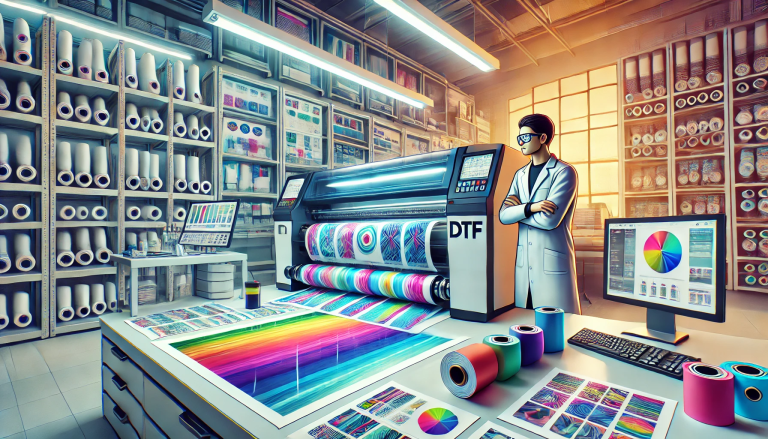“UV DTF vs. Vinyl: A Comprehensive Comparison” -MAXDTF- China UV DTF Film, UV DTF AB Paper Supplier, Made in China
Introduction
In the world of digital printing, advancements are being made at a rapid pace, leading to new, more efficient printing technologies. Two such popular methods are UV Direct to Film (DTF) and vinyl printing. This blog post will take you through an in-depth comparison between UV DTF and vinyl printing, focusing on what they are, their benefits, their drawbacks, and their ideal applications.
Part 1: What are UV DTF and Vinyl Printing?
UV DTF, or Ultraviolet Direct to Film, is a newer form of digital printing technology that directly prints onto a special film. It utilizes UV light to cure and dry the ink, hence the name. It’s a form of heat transfer printing that requires no weeding or masking and can print full-color images on a variety of materials.
On the other hand, Vinyl Printing, also known as Vinyl Heat Transfer, involves cutting out your designs from a solid colored sheet of vinyl and then heat pressing them onto your desired substrate. It’s well-suited for simple graphics and can withstand numerous washes.
Part 2: The Benefits of UV DTF and Vinyl Printing
UV DTF Benefits:
- Detailed Graphics: UV DTF can print full-color, high-resolution images, which makes it perfect for intricate designs and detailed graphics.
- Durability: The UV-cured ink is resistant to fading, scratches, and the elements, enhancing the product’s lifespan.
- Versatility: UV DTF is compatible with various materials, including fabric, leather, metal, and more.
Vinyl Printing Benefits:
- Bold and Vibrant: Vinyl prints have vibrant, solid colors that stand out, making them ideal for bold graphics and text.
- Durability: Vinyl transfers can endure numerous wash cycles, which makes them a popular choice for apparel.
- Cost-effective: For simple designs, vinyl printing can be more cost-effective, especially in low quantities.
Part 3: The Drawbacks of UV DTF and Vinyl Printing
UV DTF Drawbacks:
- Cost: UV DTF printers can be more expensive than other types of printers due to the complex technology involved.
- Learning Curve: There is a learning curve to understand the nuances of UV DTF printing to get the best results.
Vinyl Printing Drawbacks:
- Limited Detail: Vinyl printing is not ideal for intricate designs or photographs, as it cannot reproduce gradient colors.
- Time-Consuming: For complex designs, the process of cutting and weeding can be time-consuming.
Part 4: Ideal Applications of UV DTF and Vinyl Printing
UV DTF is perfect for businesses requiring detailed, full-color prints on various substrates. It’s used widely in industries such as fashion, promotional products, interior decoration, and more.
Vinyl Printing is best suited for simple designs and large text, making it a great option for t-shirts, sportswear, and signage. It is a common choice for sports teams, small businesses, and personal projects.
Part 5: The Verdict – Is UV DTF better than Vinyl?
The answer to this question is not straightforward because it depends largely on the specific needs of your project.
If you’re looking to print full-color, detailed designs onto a variety of substrates, then UV DTF might be the better option for you. Its capability to print intricate details, high durability, and wide substrate compatibility make it a versatile choice.
However, if your project involves simple designs or large text and is primarily intended for fabrics, vinyl printing might be the more cost-effective and practical solution. It’s well-suited for vibrant, bold colors and can withstand many washes.
Conclusion
Both UV DTF and vinyl printing have their strengths and weaknesses, and the best choice depends on the specifics of your printing needs. By understanding the capabilities and limitations of both technologies, you can make a more informed decision and select the method that best aligns with your project requirements. Remember, the best printing method is the one that effectively delivers your vision while keeping practical considerations in mind.



